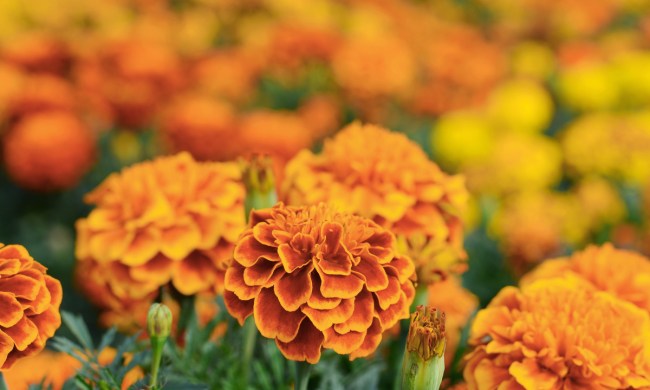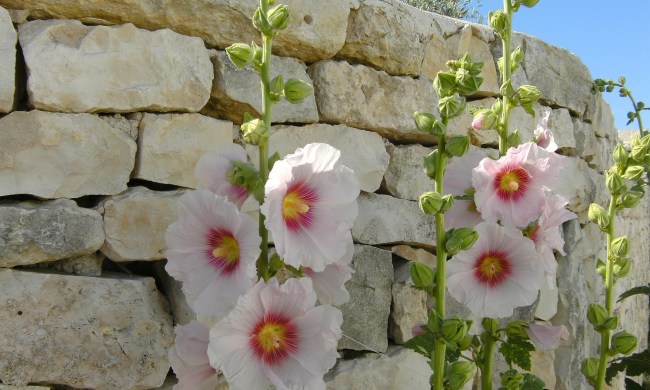Flowers come in every color, and there are flowers to match any mood. If you could use a little more sunshine in your life, then calendula is a perfect option. As a cousin of the common but lovely marigold, calendula flowers come in a range of sunny yellows and oranges. They can also be useful plants to have around. If you’re curious about these vibrant flowers, you’ll be glad to know that they’re easy to grow. Here’s everything you need to know about calendula flower care.
Calendula flower care

Calendula flowers are not high-maintenance plants, so you can relax a bit once you plant them (see below). Water your calendula flowers when the soil dries out to keep them green and perky. Avoid watering them when the soil is still damp or if rain is expected soon, as they are sensitive to overwatering. Calendula plants typically don’t need fertilizer either, unless you’ve planted them in poor soil. For calendulas planted in poor soil, a light dose of balanced water-soluble fertilizer will keep them fed and fresh.
Calendula flowers don’t often have major pest issues, as they tend to attract beneficial insects that eat some of the most common small pests. You can use organic pest control options such as neem oil or insecticidal soap to add additional protection. Organic solutions are particularly important if you plan on harvesting your calendula flowers for use.
These plants can sometimes become a target for slugs and snails, which can be a little more difficult to control. If slugs are an issue in your garden, you can use methods such as beer traps or copper tape, or you can attract birds to your garden to help reduce the impact of slugs and snails on your garden.
Planting calendula flowers

For the best flowers, your calendula plants should grow in full sun. They can tolerate partial shade, but tend to bloom less than they would in full sun. Ideally, they should be in rich, well-draining soil that has plenty of organic matter and is slightly acidic. However, calendula flowers will tolerate other soil types, including soil that has a neutral pH or is less rich in organic matter. The only type of soil that you should avoid entirely is dense, slow-draining soil, as this can easily lead to root rot. If your soil is a decent fit, but isn’t quite right, you can add compost to it to improve the drainage, nutrients, and even the pH.
Calendula flowers can grow relatively tall, especially compared to marigolds, but they have a fairly limited spread. This makes them a great candidate for container gardens, raised garden beds, and even window boxes, although the taller flowers may make it hard to see out of the windows! Be sure to choose a container with drainage holes if you decide to grow them in a container garden.
What is calendula used for?

As we mentioned earlier, you can use these flowers. If you’re considering adding calendula to your herb garden, you may wonder what to use it for. Dried calendula flowers are typically used as an ingredient in ointments. It’s a common home remedy for rashes and other skin problems. Soreness, redness, rashes, and scrapes are some of the most common problems calendula ointment is used to treat.
Also, if you have a severe pollen allergy or sensitive skin, then calendula may not be the best option, so check with your doctor first to be safe. It can also be used to make tea. In the garden, calendula plays a similar role to marigold. It’s reported to repel certain pests and can attract beneficial insects, such as ladybugs, bees, and butterflies.
Is calendula safe for pets?

Good news! Calendula is considered a pet-safe flower, so you don’t need to worry if your dog or cat chews on a few leaves or a flower. It can cause upset stomachs if they eat too much of it, as it’s still not a good food source for them, but the symptoms typically go away on their own once the plant passes through their system. If your pet has eaten a lot of your calendula plant and is experiencing a more severe upset stomach, you can reach out to your vet. They may be able to recommend something to help the symptoms pass more quickly, so your furry friend can get back to feeling alright.
Calendula flowers are gorgeous, sunny flowers that are perfect for adding a pop of color to your home and garden. They can be useful flowers to have if you enjoy making home remedies, but they’re also beautiful just as decorations. Whether you want to grow them in a regular garden bed, container garden, or to have as cut flowers, you’ll love all these wonderful plants have to offer.




